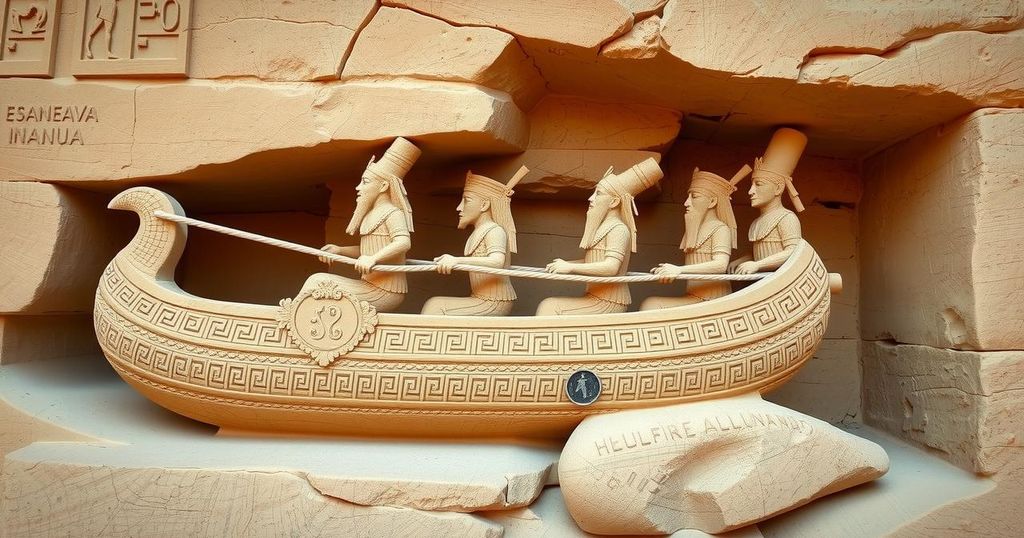Archaeology Breakthrough as Rare Rock Carving Reveals Key Secrets About Ancient Egyptian Kings
- Archaeologists have uncovered a rare rock carving near Aswan that could transform the understanding of early Egyptian rulers.
- The carving is believed to date back to the fourth millennium BC, establishing its significance in Egypt’s earliest history.
- It depicts a seated figure indicative of early kings, emphasizing the art of ancient Egypt during a pivotal cultural transition.
Rare rock carving found near Aswan could rewrite history.
A groundbreaking discovery has emerged from the sands of southern Egypt, where archaeologists have unearthed a rare rock carving that’s poised to rewrite historical narratives about early Egyptian rulers. This significant find near Aswan, it is suggested, dates back to the fourth millennium BC—long before the pyramids graced the desert landscape. The well-preserved detail of the carving reveals a seated figure, showcasing the distinctive attributes of early kings of Egypt, including the iconic long pointed false beard that was emblematic of pharaoh status, which indicates a powerful articulation of authority during that ancient time.
Boat symbolism reveals insights into ancient rituals.
The intricacies of the carving are impressive; it represents a figure in a boat, adeptly steered by one person while five others pull the vessel. This figure, while resembling the early rulership style, is distinct from Pharaoh Narmer, known to establish Egypt’s first pharaonic lineage circa 3100 BC. The discovery, unraveling amid debris in a sandstone outcrop, overlooks the Nile, suggesting that this artwork not only served a decorative purpose but may also have played a role in ceremonial functions, being that boats held multiply layers of significance in ancient Egyptian culture.
New insights into Egypt’s unification and cultural evolution.
According to Dr. Dorian Vanhulle, an Egyptologist affiliated with the Musée du Malgré-Tout in Belgium, the carving reflects a transformative period in ancient Egyptian history. It comes from the Early Dynastic period, a time characterized by the unification of Upper and Lower Egypt and the establishment of societal frameworks. Archaeological findings point to the transition from fragmented regional powers to consolidated governance being arguably tumultuous. This artwork adds a vital piece to the puzzle of state formation in ancient Egypt, enhancing our understanding of how power dynamics were visually represented through art and rock engravings, which communicated authority and societal structure to the populace.
In summary, the recent discovery of a rare rock carving near Aswan is not only a remarkable archaeological find but also provides crucial insights into the nature of early Egyptian kingship and state formation. It illustrates the significance of boats in ceremonial practices and reflects the complex societal transitions of ancient Egypt. As researchers continue to analyze this carving, it promises to enhance our understanding of the artistic and political developments that shaped one of history’s most fascinating civilizations.




Post Comment